The Significance of Waves in Japanese Aesthetic Art
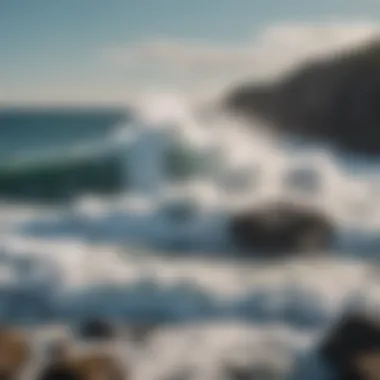

Intro
Waves have long played a vital role in the tapestry of Japanese art, serving not just as mere decorations but as profound symbols interwoven with the very fabric of culture and philosophy. These undulating forms evoke deep emotions and reflections on nature's power, beauty, and fleetingness. Artists have interpreted waves through various lenses—from the splendor of traditional woodblock prints to the minimalism of contemporary pieces.
This article delves into the intricate relationship between waves and Japanese art, examining how these dynamic patterns resonate with universal themes. The exploration extends to various art forms, showcasing the connections between waves and Japan's water-based activities, encapsulating a range of human experiences—an ongoing dance between existence and oblivion.
In our discussion, we aim to illuminate the cultural significance that waves hold, not only as a motif but also as a reflection of the national spirit. By tracing their evolution from traditional aesthetics to modern interpretations, we will provide insights into how Japanese artists harness this natural element to express complex ideas and feelings.
Ultimately, we want our readers to grasp the profound essence of waves as an artistic motif in Japan and to understand their relevance in both historical and contemporary contexts.
"Art is not what you see, but what you make others see." - Edgar Degas
Through this journey, we invite you to reflect on how waves echo within your own experiences, whether in art or nature.
Cultural Context of Waves in Japan
The portrayal of waves in Japanese art is deeply woven into the cultural fabric of the nation. Waves are not merely a representation of the ocean; they symbolize a complex interplay of life, emotion, and philosophy. By examining the cultural context of waves, one can gain a better understanding of their significance in shaping both historical and contemporary artistic expressions.
Historical Significance of Water Imagery
Water imagery, particularly waves, has a rich history in Japan. From ancient times, water was seen as both a giver and taker of life. The relationship between people and water is rooted in Shinto beliefs, where rivers and seas are considered sacred, inhabited by deities. Such an understanding is essential for appreciating how these elements manifest in art.
In Edo period artworks, waves were often depicted not only for their aesthetic appeal but also to express the unpredictability of nature. Artists frequently utilized waves to convey movement and emotion—a technique that resonates with the viewer. For instance, in Hokusai's famed woodblock print, waves are not just background scenery but are infused with energy and life, reflecting the tumultuous nature of existence itself.
The historical context of water imagery leads one to ponder its ongoing significance. Today, contemporary artists draw inspiration from those bygone styles, often utilizing modern techniques yet echoing ancient themes.
Waves as a Symbol in Japanese Mythology
In Japanese mythology, waves hold profound symbolic meaning. For instance, the sea god Ryujin, known for his control over tides, embodies the power and majesty of the ocean. Mythology hints at a deeper understanding of life that transcends mundane experiences. Waves symbolize transition—between life and death, the mundane and the sacred, providing a metaphysical lens through which one can explore human experience.
Among many legends, the tale of Urashima Taro illustrates this notion beautifully. After saving a turtle, the young man is whisked away to the Dragon Palace under the sea. When he returns home, he finds a changed world, emphasizing the transformative power of water. This narrative showcases how waves, in essence, become a conduit for life's transitions and serve as a reminder of the fluidity of existence.
"Waves tell stories beyond mere imagery. They carry whispers of the past, present, and future, acting as a vital link between humanity and the natural world."
In essence, both historically and mythologically, waves create a rich backdrop that informs Japanese art's aesthetic harmony. Understanding these elements is crucial for appreciating their deep-rooted impact on art, culture, and the philosophical narratives woven throughout Japan's history.
Traditional Japanese Art Forms Featuring Waves
Waves have long played a crucial role in Japanese art, offering an avenue for artists to convey emotion, symbolism, and the beauty of transient nature. From the swirling patterns seen in classical prints to the delicate brush strokes in ink paintings, the portrayal of waves encapsulates not only the physical movement of water but also deeper philosophical connections with life itself. The significance of waves in traditional art forms reveals how these motifs serve as more than just aesthetic elements; they encapsulate the essence of culture, history, and spirituality in Japan.
The Influence of Ukiyo-e
Hokusai's 'The Great Wave off Kanagawa'
One of the most recognized pieces in Japanese art is Hokusai's 'The Great Wave off Kanagawa'. This iconic print exemplifies the mastery of ukiyo-e, a genre that focuses on landscapes and everyday life. The great wave featured in this work is not merely a natural phenomenon but a metaphor for the uncertainties of life. Hokusai heightens this by juxtaposing the massive wave against Mount Fuji, portraying both chaos and calm in a single frame. This duality speaks to those familiar with life's ebb and flow, making it a complex reflection on existence.
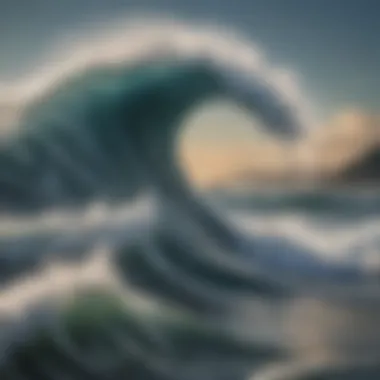
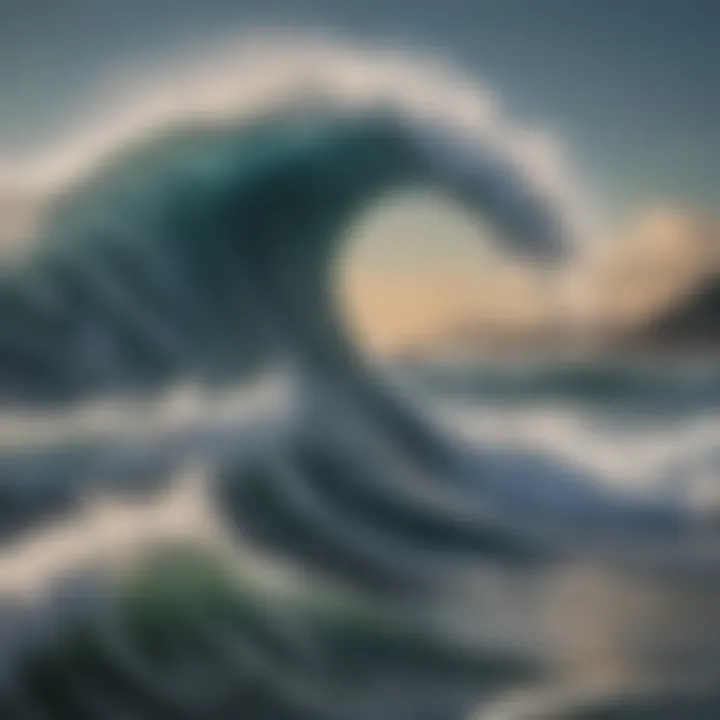
The key characteristic of this artwork is its dynamic composition and use of color. The stark blue of the wave contrasts beautifully with the white foam, creating a captivating visual experience. This piece is beneficial for our exploration as it illustrates how waves can symbolize both beauty and danger—two forces that constantly intertwine in nature.
One unique feature of 'The Great Wave' is Hokusai's detailed linework, which brings life to the crashing water. The advantage here lies in its ability to evoke a visceral reaction, stirring intense feelings within the viewer. However, it also serves as a reminder of nature's immense power, adding layers of meaning to the artwork.
Role of Waves in Landscapes
Waves in landscape art serve as a vital narrative device that connects viewers to Japan's geographical and cultural identity. Artists have often incorporated waves within larger scenes, allowing the motif to represent geographical boundaries as well as the historical significance of trade and travel across water.
The role of waves in landscapes emphasizes natural beauty through gentle curves and foamy crests. This characteristic enhances the melodious flow of the artwork and invites viewers to immerse themselves in the scene. These landscapes resonate with audiences who appreciate both tranquility and the reality of nature's tumult. The relevance of such nuanced portrayals can't be overstated; they reveal the relationship between environment and man, illustrating how the land meets the sea in harmony.
A unique aspect of waves in this context is their function as connective elements, bridging sky to sea. The advantage there lies in the evocation of serenity, leading the viewer to a state of contemplation of Japan’s vast landscapes. Yet, the downside may be a risk of romanticizing nature, overshadowing its unpredictable episodes.
Waves in Sumi-e Painting
Techniques and Brushwork
In traditional sumi-e, or ink wash painting, waves are depicted with an economy of brush strokes that convey movement and fluidity. The technique used to represent waves requires precision and an understanding of how to manipulate ink density to create depth and texture. This method not only reflects the physical appearance of water but also connects to its philosophical meanings, such as change and impermanence.
The unique feature of brushwork in sumi-e emphasizes simplicity and the beauty of imperfection. The flowing lines and varying ink tones highlight the visual rhythm of waves, allowing artists to express dynamics succinctly. The benefit of this art form lies in its ability to convey complex emotions and ideas with minimalistic approaches. Yet, it demands technical skill and a deep understanding of both the medium and the subject matter, which may present challenges for budding artists.
Philosophical Implications
Philosophically, waves in sumi-e embody concepts of impermanence and the transience of life. This perspective can ignite a contemplation of the natural world and our place within it, leading one to recognize the beauty in fleeting moments. The representation of waves thus moves beyond surface imagery, prompting deeper reflection about the cycle of existence.
The philosophical aspect of waves in this art form serves as a beneficial lens through which to view one's relationship with nature. The unique feature here is the emphasis on the interplay between the divine and the mortal, suggesting that life, like waves, is in a constant state of flux. This insight encourages a meditative approach to both art and life itself. However, some may find these abstract interpretations difficult to grasp, especially without a foundational understanding of the underlying philosophies.
"Waves are the heartbeat of nature, teaching us of rhythm, power, and the beauty of letting go."
In summary, waves in traditional Japanese art forms are multifaceted, serving not only as an aesthetic element but also as conduits for philosophical and emotional expression. Whether through the detailed prints of ukiyo-e or the fluid strokes of sumi-e, these motifs showcase Japan's rich cultural tapestry and offer deep insights into the soul of its people.
Modern Interpretations of Waves in Japanese Art
Modern interpretations of waves in Japanese art are a fascinating blend of historical reverence and contemporary innovation. These interpretations extend beyond the mere depiction of waves; they encapsulate the evolving relationship between nature and urban life, providing a fresh lens through which to view traditional motifs. In contemporary art, waves serve as a dynamic symbol, resonating with themes of fluidity, change, and environmental consciousness. These elements are essential in understanding how waves contribute to the ongoing conversation about cultural identity and artistic expression in Japan.
Contemporary Artists and Their Views
Digital Art Explorations
Digital art explorations allow artists to manipulate images of waves in revolutionary ways. Using advanced software and tools, artists can create mesmerizing visuals that depict waves in ways previously unheard of. This modern approach not only showcases the aesthetic beauty of waves but also serves as a commentary on technology's impact on nature. With the pixelated brushstrokes, contemporary artists can capture the energy of the wave while experimenting with colors and forms in ways that traditional techniques simply can't achieve.
A notable characteristic of digital art is its accessibility; artists have the ability to share their work widely through online platforms, reaching audiences far beyond geographical limits. However, the ephemeral nature of digital art often raises questions about originality and permanence.
Installation Art Using Water Themes
Installation art using water themes elevates the concept of waves by immersing viewers in a multisensory experience. Artists create environments where water movements and wave sounds interact, engaging people physically and emotionally. This approach makes it possible to experience the essence of waves directly, allowing for a deeper connection to the water that is often lost in traditional paintings. Such installations are impactful because they transform public spaces, encouraging audiences to contemplate their relationship with nature. A unique feature of this art form is its capacity to adapt to various settings, whether inside galleries or open parks. Yet, the reliance on environmental factors like weather can be a double-edged sword, sometimes hindering the intended experience.
The Intersection of Nature and Urban Spaces
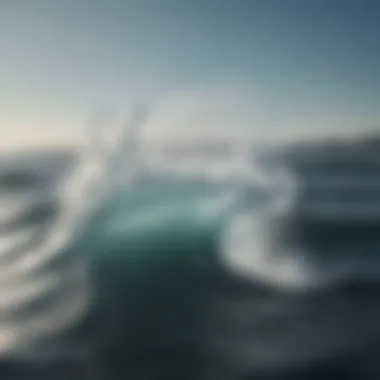
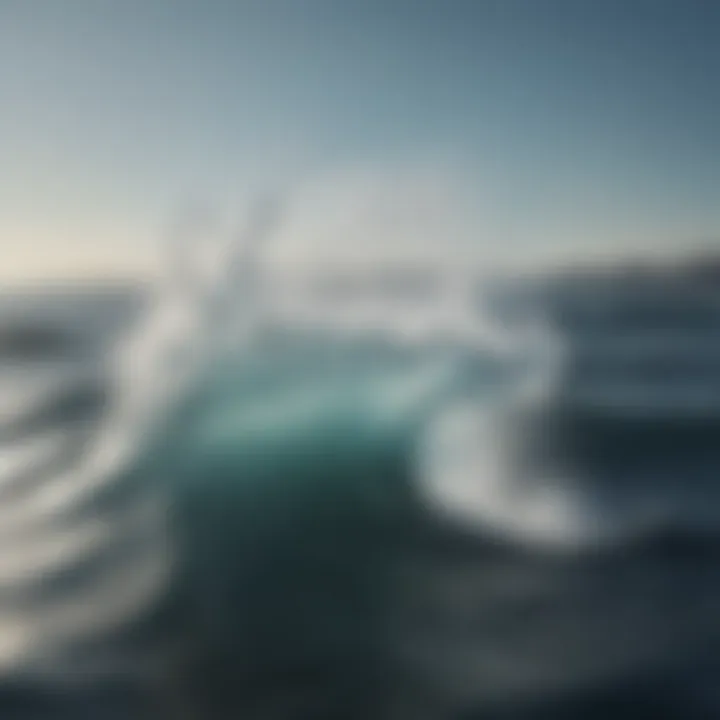
Art in Public Areas
Public art plays a crucial role in reintroducing natural elements to urban settings, allowing waves to come alive in unexpected places. By incorporating wave motifs into murals, sculptures, or interactive displays in public spaces, artists encourage community engagement and connection to nature. The big advantage lies in the ability to reach a broad audience who might not otherwise engage with more traditional art forms. One downside, however, could be the transient nature of public art.
Environmental Themes in Art
Addressing environmental themes through the lens of waves highlights the ongoing challenges facing water bodies due to urbanization and climate change. Artists effectively weave narratives about sustainability and respect for nature into their work, prompting conversations that resonate with a socially conscious audience. The key characteristic of this thematic approach is its relevance to global concerns, bringing artists and viewers together for a cause. A challenge, though, might be the risk of diluting the artistic message with overwhelming socio-political themes, making balance essential for impact.
"Waves, in their essence, remind us that change is the only constant, both in nature and in life."
Through each modern exploration of waves in Japanese art, one begins to unravel a complex tapestry of meaning, emotions, and interpretations. This new wave of artistic representation beckons audiences to delve deeper into their surroundings and to appreciate the inherent beauty found within the shifting tides.
Philosophical Depth of Waves in Japanese Culture
In examining the world of Japanese art, it is crucial to delve into the philosophical dimensions that underpin the significance of waves. Their representation is much more than a mere aesthetic choice; it embodies deep-rooted beliefs and values intrinsic to Japanese culture. Waves serve as a symbol of life's transitory nature and highlight the connection between humanity and the environment. This offers profound insights for athletes and outdoor enthusiasts who often engage with water in both sports and leisure.
The artistry surrounding waves reflects a nuanced understanding of impermanence and harmony. These elements resonate deeply in various messages conveyed through paintings, sculptures, and even in the practice of aquatic sports. Regardless of the medium, waves suggest a fluidity in existence and an ongoing dialogue between nature and human endeavor.
Waves and the Concept of Impermanence
The concept of impermanence, or "mujo" in Japanese, distinguishes much of Asian artistic traditions. Waves are constantly in motion, a fitting metaphor for the ever-changing landscape of life. This notion evokes a sense of beauty that is often observed in nature's unpredictability. For Japanese artists, capturing waves in art is akin to grasping a moment in time that soon dissipates.
Waves remind observers that nothing remains static; an insight that resonates deeply among athletes seeking mastery over their respective disciplines. Just as waves rise, crash, and recede, so too do victories and defeats in the realm of sports. Each experience contributes to a broader narrative of growth, learning, and understanding. This connection between physical exertion and embracing the impermanence of moments cultivates a richer experience in one’s athletic journey.
Harmony Between Man and Nature
Waves illustrate a fundamental principle in Japanese philosophy: the harmony between man and nature. This is a recurring theme found throughout various interpretations of waves in art. The beauty of a wave is not isolated; it exists in relationship to the shores, skies, and ecosystems it interacts with. This interdependence showcases a reverence for the natural world, urging individuals to find their place within it rather than above it.
In outdoor pursuits like surfing or sailing, enthusiasts often find that these activities do not merely challenge their physical abilities but create a bridge between themselves and the aquatic environment. The feeling of riding a wave is not just about the thrill; it's also an intimate moment of connection and understanding with the natural world. Each ripple and swell speaks to the importance of balance and respect, underscoring a philosophical approach to leisure and sport that many strive for in their practice.
"In the dance of waves lies a profound reminder of our integral place in nature’s rhythm."
This perspective leads athletes and hobbyists alike to not only engage with the waters more intentionally but to reflect upon their personal journeys in tandem with nature's ebb and flow. Waves thus encapsulate a rich tapestry of philosophical discourse that extends well beyond the canvas and into the hearts of those willing to listen.
Waves and the Connection to Aquatic Sports
Waves play a significant role in shaping the aquatic sports culture in Japan, impacting social dynamics and individual experiences. This relationship goes beyond just the thrill of riding a wave; it fosters a deep-seated connection between the participants and the natural environment. The ebb and flow of the water not only sets the stage for various sports but also influences the activities around them, offering unique benefits and considerations for those who partake in these dynamic experiences.
Surf Culture in Japan
Historical Overview of Japanese Surfing
The history of surfing in Japan can be traced back to the 20th century when it emerged as a popular pastime. Surfing gained momentum post-1960s, influenced by international exposure. In fact, notable beaches like Kamakura and Chiba saw surfers flocking to their shores, signaling the sport's growing popularity. The rise of surfing was not just a trend; it became a community, rallying individuals around a shared passion. This historical context is vital, as it highlights how surfing in Japan has evolved from niche activity to an integral part of coastal life.
A key characteristic of Japanese surfing is its strong respect for nature. Surfers tend to have a deep understanding of wave patterns and tides, which is essential knowledge for riding waves safely. This aspect makes it popular among water sports enthusiasts as it blends physical activity with environmental awareness. However, the unique feature of surfing history in Japan is its cultural fusion, blending traditional values with modern-day excitement, which brings its own advantages and disadvantages. While many find joy out on the waves, the surge in popularity often brings issues like overcrowding, making for a bittersweet experience.
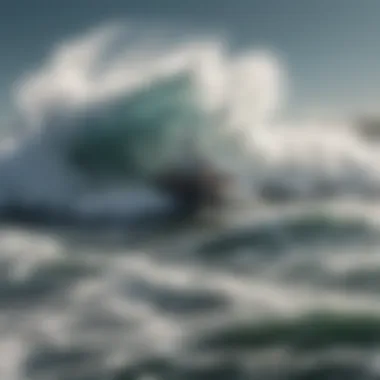
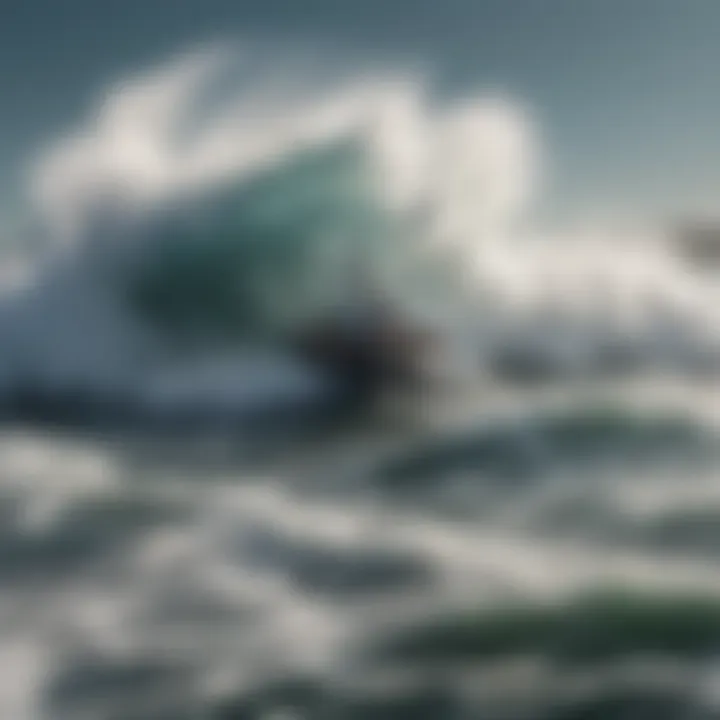
Popular Surf Spots
When it comes to the most popular surf spots in Japan, places like Shonan and Miyazaki are often at the forefront. Shonan, known for its consistent waves, attracts not only local surfers but also international enthusiasts seeking that perfect ride. Similarly, Miyazaki, located along the southern coast, is considered a hidden gem for those craving beautiful beaches paired with fun surfing experiences.
The main characteristic that sets these surf spots apart is their variety of wave conditions, which cater to both beginners and experienced surfers. The diverse settings of each location emphasize their cultural backdrop, making these spots even more alluring.
A unique feature of these popular surf locations is how they serve as community hubs. Local surf schools often operate there, providing lessons that encourage newcomers to embrace the joy of riding waves. However, with great popularity comes the responsibility of maintaining respect for the ocean and the surrounding environment, as heavy traffic can lead to erosion and pollution, creating disadvantages for these cherished areas.
Waves in Kayaking and Sailing
Techniques for Navigating Waves
For kayaking and sailing enthusiasts, mastering the waves is essential for a safe and enjoyable experience on the water. Techniques such as the "Eskimo roll" in kayaking or the "tacking" maneuver in sailing showcase the skill involved in navigating waves effectively. Understanding how to read the waves' behavior can often mean the difference between a smooth ride and a tumultuous journey.
The key characteristic of these techniques lies in their adaptability. Different water conditions require surfers to adjust their strategies; what works on a calm day might not cut it during stormy weather. This became increasingly important in Japan, where the ocean isn’t always forgiving. Learning to navigate waves not only enhances the physical aspect of these sports but also fosters a respect for the ocean's unpredictable nature, making it a worthwhile choice for aquatic adventurers.
However, one significant disadvantage is that mastering these techniques requires time and practice. Newcomers often find themselves frustrated if they do not see immediate results, potentially leading to a disheartening experience. Yet, the rewards for those who persevere can be immensely gratifying.
Safety Practices on Water
Engaging in outdoor water sports comes with its own set of risks, especially when navigating waves. Proper safety practices are paramount. Essentials like wearing personal flotation devices, informing someone about your plans, and always checking weather conditions before heading out are common recommendations. These practices contribute to the overall safety culture surrounding aqua sports.
A significant aspect of safety is the use of self-rescue techniques, should an unexpected capsize occur. Knowledge of these methods is essential for both novice and experienced sportspeople, making it a beneficial point of focus in any discussion related to aquatic sports.
Moreover, the unique feature of these safety practices is that they often emphasize community. Experienced water sports enthusiasts frequently mentor newcomers, which fosters camaraderie and shared knowledge. However, neglecting these guidelines can result in serious consequences, illustrating the ongoing need to promote safe practices within the sporting community.
"The waves carry the stories of those who dare to ride them, but they also remind us of the respect we owe to nature and each other."
In summary, waves and aquatic sports are tightly intertwined in Japan, spanning surfing, kayaking, and sailing. An understanding of the cultural history, popular locations, navigational techniques, and safety practices reveals just how deep the connection runs. The waves not only serve as a backdrop for adventure but also channel a profound respect for the environment and community among enthusiasts.
Ending: The Enduring Significance of Waves in Japanese Art
Waves have long captured the imagination of artists and scholars alike, particularly within the rich tapestry of Japanese art. The recurring motif of waves is not merely an aesthetic choice; they encapsulate deep cultural insights and reflect the harmonious relationship between humanity and nature. In various art forms, waves convey emotional undertones that resonate with viewers, evoking a sense of beauty, turbulence, and resilience. This section examines the importance of waves in Japanese art, highlighting specific elements and benefits that underscore their enduring significance.
Reflection on Cultural Heritage
At the heart of Japanese culture lies a profound reverence for nature, and waves serve as an essential embodiment of this sentiment. From the earliest forms of art to contemporary expressions, the depiction of waves conveys not only the physical beauty of water but also its cultural implications. Artists like Katsushika Hokusai, through works such as "The Great Wave off Kanagawa", have elevated this natural force to a symbol of both power and grace.
Waves carry historical weight; they remind us of Japan’s formative connections to the sea and its role in the livelihoods of countless communities. Fishing, trade, and maritime exploration are woven into the fabric of Japanese existence, providing a backdrop against which waves gain symbolic resonance. In this light, they become a vessel for storytelling, reflecting a society that has thrived amidst the ebb and flow of ocean currents.
Moreover, waves in Japanese art foster an appreciation for impermanence, a central tenet of Japanese philosophy. They mirror the transitory moments of life, urging viewers to ponder the beauty in change and the inevitability of time. This cultural heritage is more than mere nostalgia; it is an invitation to engage with artistic expressions that resonate with collective experiences and sentiments.
Future Directions in Art and Culture
As we gaze toward the horizon, the significance of waves in Japanese art is likely to evolve, influenced by modern concerns such as climate change and urbanization. Artists are increasingly grappling with these themes, integrating contemporary issues into their works. The future may very well see waves depicted as symbols not only of beauty but also of urgency and advocacy for environmental consciousness.
In the sphere of digital art, for instance, creators explore new mediums that harness technology to reinterpret waves. Virtual reality can immerse audiences in dynamic aquatic environments, creating compelling narratives that bridge traditional aesthetics with modern storytelling.
Moreover, collaboration between artists and environmentalists could lead to innovative installations that use waves as a backdrop for discussions on sustainability and ecological preservation. Sculptures and public art pieces could emerge in urban areas, reminding society of the importance of water and our responsibility to care for it.
"Art is a reflection of society, and waves in Japanese art tell a story of enduring cultural ties and pressing contemporary narratives."
As we reflect upon the profound relationships established through the artistic depiction of waves, it becomes evident that they are more than mere brush strokes on canvas. They represent a profound dialogue that transcends time, culture, and medium—a testament to the everlasting significance of nature’s rhythms in the art world.















